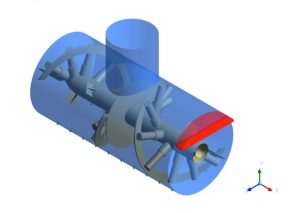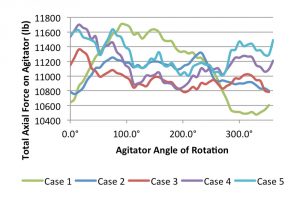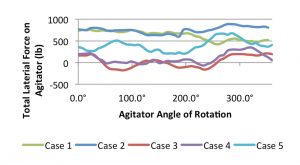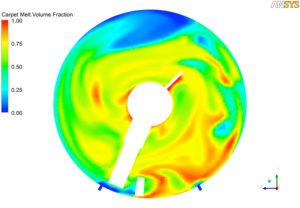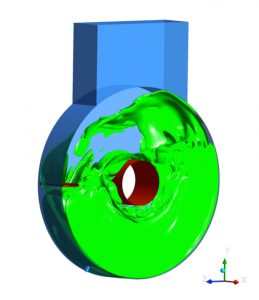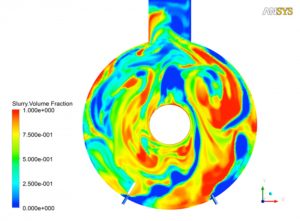The purpose of this project was to determine the root cause of vibrations and agitator shaft packing glands failure. The vibrations of the reactor were excessive for the supporting structure. The excessive vibrations of the reactor and the agitator were observed to be the potential cause of the short life expectancy of the agitator shaft packing glands, and the structural failure of the agitator. There was a direct correlation between the vibration of the entire structure and the operating speed of the agitator. The scope of the analyses was to analyze the carpet melt dynamics within the reactor, and provide structural analyses of the reactors under the prescribed dynamic loadings. A coupled model was developed using Computational Fluid Dynamics (CFD) and Finite Element Analysis (FEA) to simulate the agitation process inside the reactors and the structural analyses of the resulting loads.
CFD was used to analyze the motion of the fluid within the reactors caused by the rotation of the agitators. To determine the effects of the changes in the melt density and viscosity on the total forces acting on the agitator surface, a small scale CFD model was created from a 20” section of the reactor. The effects of changing the wear height and the steam rate on the total forces acting on the agitator, and the degree of mixing between the steam and the melt were determined using a full scale model. The results of the CFD analyses were utilized as boundary conditions for the FEA to perform the structural analyses. Another CFD model was created to analyze the interaction of the steam and the melt in the immediate vicinity of the steam nozzles.
- General Layout of the Agitator
- Total Axial Force on the Agitator
- Total Lateral Force on the Agitator
- Plot of Melt Volume Fraction
- Geometry of Small Scale Model
- Carpet Melt Volume Fraction in the Center of the Model

